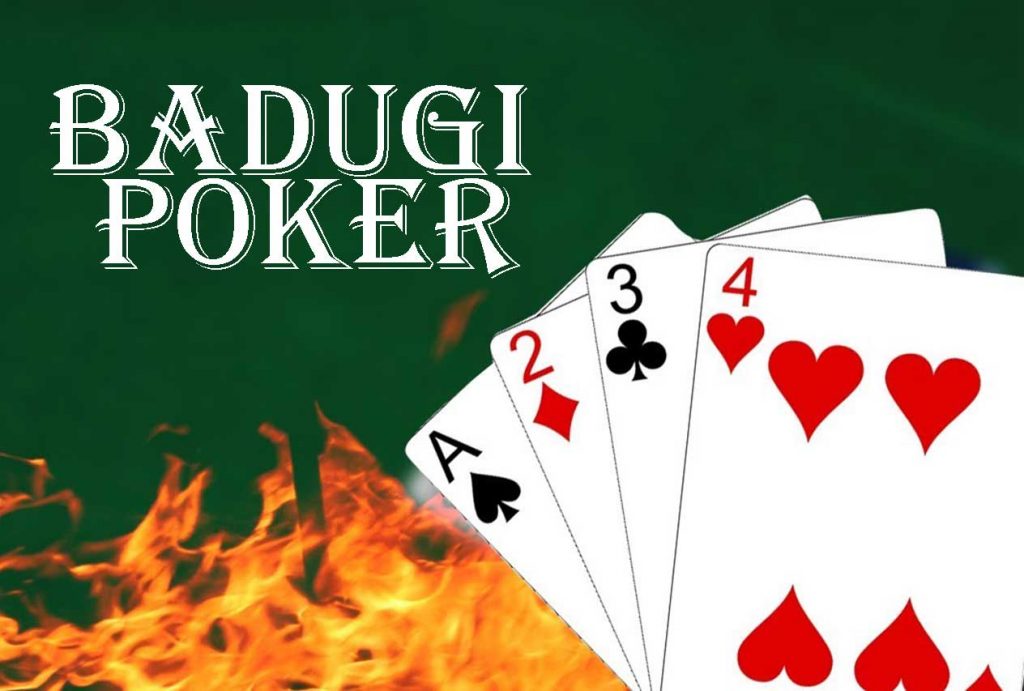Badugi is also known as Asian poker. It is claimed that this variation of poker originated either in Korea or China. If you are already familiar with poker, then you should not have a problem playing Badugi. While there are similarities between Badugi and other variations of poker, there are also differences that you should be aware of. This way you will not get confused when planning your game play.
This variation of poker can be played by a maximum of six players. It is played with four cards and not five. The aim of the game is very simple. You have to ensure that your hand does not have two cards with the same value or same suit. If you have two cards that are of the same value or suit, then you have to discard while ensuring that you retain the card with the lowest value. As you discard the unwanted cards, it is quite possible that your hand may become a 3-card, 2-card or 1-card hand.
When the game starts, four cards are dealt to each player face down. The players should make sure that their opponents do not figure out what combinations they have. Once the cards are dealt, the betting rounds commence. Badugi has four rounds of betting. The first round is immediately after the cards are dealt. The next three rounds are after the cards are drawn. Basically, the players have three rounds during which they can change or draw their cards. If a player has a winning hand, then he has the option not to draw any card or draw 1 to 4 cards.
Depending on the type of hand a player has, he can call, raise, fold or check. In each round, the wager increases until all the four betting rounds are finished. At the end of the fourth round, if there is more than one player, then there is a show down of cards to figure out who the winner is. The players have to lay their cards face up on the table. Then based on the Badugi evaluation method, the winner is declared. Here it is important to note that it is not necessary that a person with less cards in the hand will win because according to Badugi rules, a 4-card hand wins over 3-card, 2-card and 1-card hands. Also, it is possible to have a tie. In case of a tie, the pot is divided between the players.
Now that you know the basic rules of Badugi game play, it is time to move on to strategies that you can use.
When it comes to starting hands, it is important to note that your hand should have 4 cards that have a value of 7 or lower. This is considered to be a good hand for starting the game. However, if you have cards that have a value of 8 or more, then it is not a hand that you should play. Think about folding at this point as there is no guarantee that you can reduce the value of your cards in the next round.
If you have a good starting hand, it is time for you to raise and get more money into the pot. This will also ensure that you get other players to fold their hands.
Just like any other variation of poker, in Badugi too players tend to bluff. Usually players who are last to act have the opportunity to observe other players and figure out the strength of the opponents’ cards. They will base their bets on this. Also, if there are more number of players playing, then chances are very high that one of the players will have a 4-card Badugi. So, if there are 6 players playing, you should not try to bluff your way with 2 or 3 cards in your hand. It will not be effective. However, this strategy will work when there are 4 players playing the game.
In this variation of poker, there are no community cards. This is an important point to keep in mind. While Badugi is an easy game to play, you will understand the rules and strategies of the game faster if you have played poker before. However, this is not a must and even a non-poker playing person can learn this game very effectively and can master the art and strategies of this game. Just like any other variation of poker, Badugi also needs fair amount of practice before a player can get good. So, the only way to learn how to play Badugi and to master the different playing strategies is by actually playing it.

